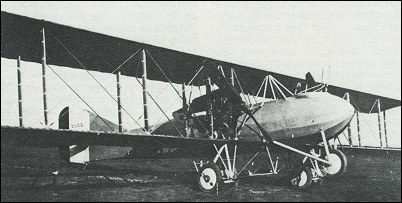 |
Caudron R.41915 |  |
| BOMBER, RECONNAISSANCE | Virtual Aircraft Museum / France / Caudron |
 |
The Caudron R.4 appeared in prototype form in June 1915 and, for its time, was a remarkably clean and smooth-contoured aircraft. While the brothers Caudron had collaborated closely in aircraft design, the G.3 and G.4 had been credited largely to Gaston Caudron, while the R.4 was mostly the work of Rene Caudron. ## The R.4 was a radical departure from its predecessors, with an attractive full-length fuselage and single fin and rudder. The unequal-span wings had three bays on each side, and there were ailerons on the upper wing only. As well as the twin-wheel main landing gear units and tailskid, there was a single nose-wheel intended to protect the propellers in the event of a rough landing. Power was provided by twin 97kW Renault i2Db engines. The three-man crew included nose and midships gunners each provided with twin Lewis machine-guns. The R.4 did well, defending itself brilliantly against enemy interceptors and building up a considerable score of victories. Intended originally as a bomber, it served mainly as an A.3 category three-seat reconnaissance aircraft, frequently engaged in photographic work. Its climb rate was not impressive, and a few aircraft were built with more-powerful 112kW Hispano-Suiza 8Aa engines in an attempt at improvement. The problem which emerged was that production aircraft began to reveal a certain structural weakness. Among the crashes that happened, the most disastrous for the Caudron firm occurred on 12 December 1915, when a series aircraft under test was destroyed and Gaston Caudron, who was piloting the aircraft, was killed. In early use Escadrille C.46 had claimed 34 German aircraft brought down with its R.4s in an eight-week period, but it was soon clear that in addition to structural redesign, improved ceiling and greater manoeuvrability were highly desirable. The new Caudron chief designer, Paul Deville, accordingly set to work on a new improved development which was to emerge as the R.11. Production of the R.4 was terminated after 249 had been built. In the reconnaissance escadrilles it was replaced by the more-powerful Letord 1 during 1917.
|  All the World's Rotorcraft | ||||||||||||||||||||||||||||||||||||||||||||
 |

|